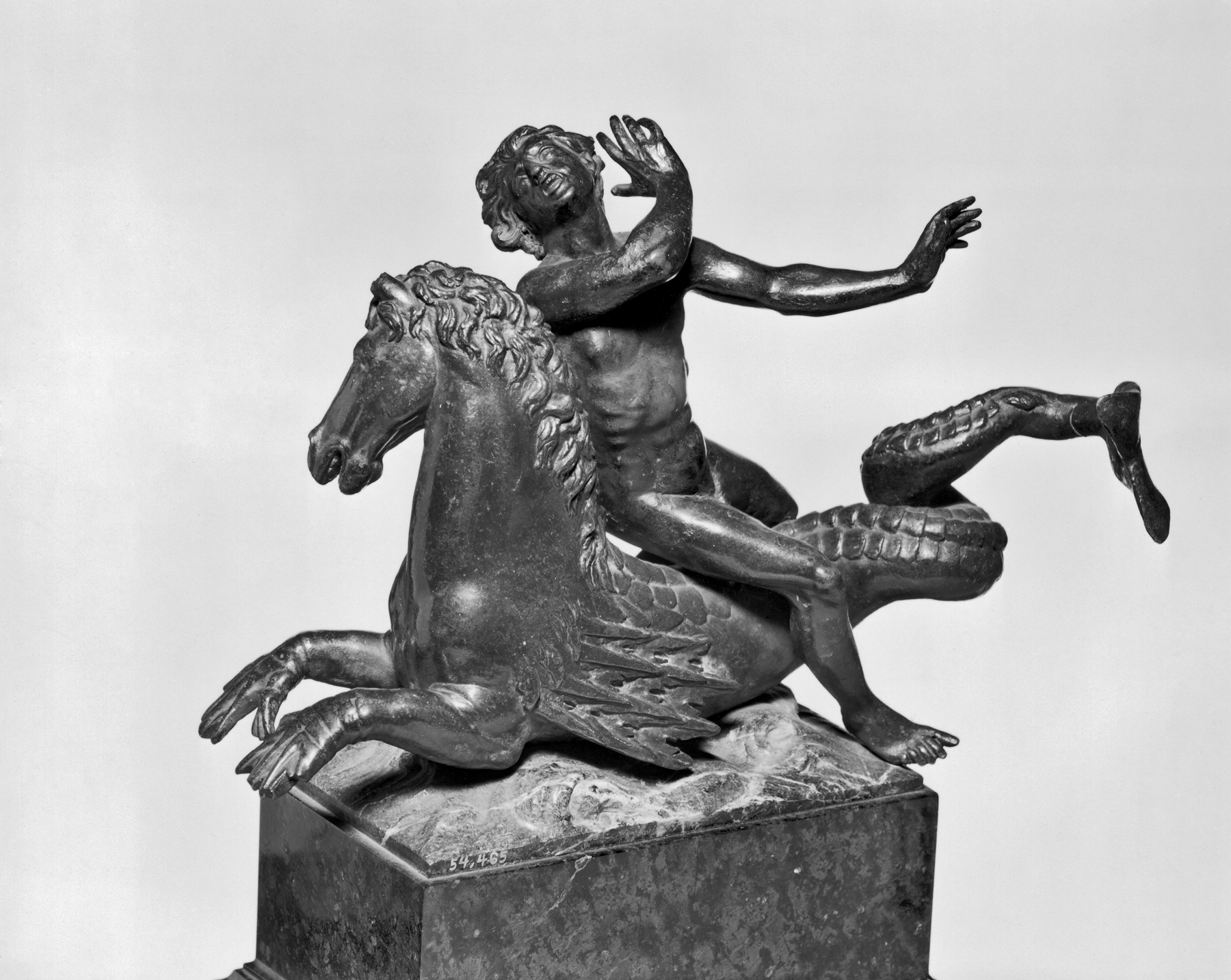Hippocamp (Sea Horse)
(Renaissance Europe )
In antiquity, hippocamps, or sea horses, mythical creatures that were half horse and half fish, were represented drawing the chariot of Neptune, Roman god of the sea. Renaissance artists in the territory of Venice, which trumpeted itself as ruler of the seas, delighted in representing the sea god and his steeds. The wider fascination for monstrous beasts of bronze, in imitation of Roman tastes, among northern Italian humanists and sculptors also prompted an interest in the creature.
In old photographs such as this one, a rider (54.465A), facing backward in a very precarious position is included. Technical and stylistic analyses show that the figure was not part of the original conception and has been removed.
Provenance
Provenance (from the French provenir, 'to come from/forth') is the chronology of the ownership, custody, or location of a historical object. Learn more about provenance at the Walters.
Acquired by Henry Walters, Baltimore; by bequest to Walters Art Museum, 1931.
Geographies
Italy, Padua (Place of Origin)
Measurements
H: 7 7/8 × W: 11 1/4 in. (20 × 28.58 cm)
Credit Line
Acquired by Henry Walters
Location in Museum
Accession Number
In libraries, galleries, museums, and archives, an accession number is a unique identifier assigned to each object in the collection.
In libraries, galleries, museums, and archives, an accession number is a unique identifier assigned to each object in the collection.
54.465B


